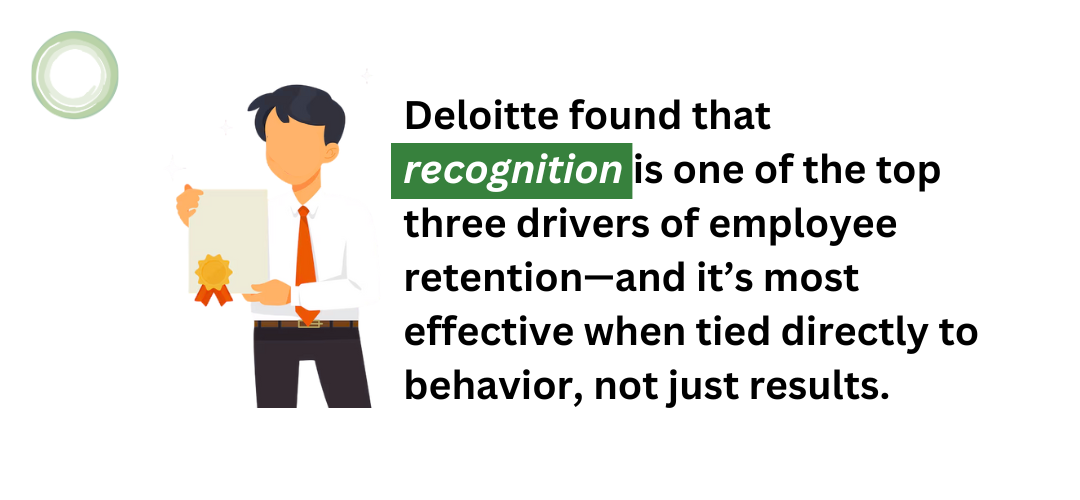4 Steps to Build a Culture of Accountability in High-Performing Teams
Accountability is the engine of every high-performing team.
It’s not about micromanaging tasks—it’s about building a culture where everyone takes ownership and delivers. Especially in high-stakes industries like private equity, healthcare, technology, and professional services, accountability is what keeps teams aligned, confident, and consistently ahead.
But here’s where leaders get it wrong: they confuse accountability with control. Real accountability empowers your people to step up, make decisions, and drive outcomes—without needing permission at every turn.
Here’s how to embed accountability in a way that strengthens trust, sharpens decision-making, and drives results:
1. Clarify Expectations So No One’s Guessing
If your team’s unclear on goals, timelines slip, priorities shift, and frustration rises. Accountability starts with clarity—everyone knowing what success looks like and how they contribute.
How to Set the Standard:
- Kickoff Alignment Meetings: For every major initiative, gather key stakeholders to define deliverables, timelines, and dependencies upfront. No confusion, no overlap.
- RACI Charts: Assign clear roles—who’s Responsible, Accountable, Consulted, and Informed—so every decision has an owner.
- Outcome Mapping: Don’t stop at assigning tasks—define what success looks like. What specific shifts in behavior, process, or results do you want to see by the end of this project? Instead of checking off to-do lists, focus your team on the outcomes that matter.
Example: If you’re leading a post-merger integration, the outcome isn’t just “complete system migration.” It’s “achieve seamless client experience with zero service interruptions.” Build regular checkpoints to revisit whether the team is moving toward those key outcomes—and adjust as market conditions shift.
Bottom line:
Clear expectations eliminate the guesswork—and accountability becomes part of how your team operates, not something you enforce.
Want to know if your team owns their outcomes—or waits for direction? Use our Leadership Engagement Quiz to assess your team’s accountability mindset.
2. Delegate Authority, Not Just Tasks
If you want a team that performs without constant oversight, you need to give them autonomy to lead. Delegation isn’t handing off assignments—it’s handing over ownership.
How to Build Autonomy:
- Ownership Pods: Organize teams into smaller units, each fully responsible for a project piece. It reduces bottlenecks and speeds decisions.
- Escalation Guidelines: Make it clear when team members should solve independently—and when issues need to escalate.
- Pre-Mortems: Before launching, anticipate obstacles together. Assign ownership for handling them before they derail progress.

Research Insight:
Dan Pink’s research shows autonomy is a key driver of motivation. Teams perform better when they control how they deliver results.
Real-World Example:
One tech client introduced cross-functional ownership pods during product sprints—cutting decision-making delays and boosting delivery speed.
Make Feedback Continuous (Not Once a Year)
Annual reviews won’t cut it. High-performing teams rely on fast, real-time feedback to course-correct, stay aligned, and perform at their best.
How to Build Feedback Loops:
- “Plus/Delta” Sessions: After every major milestone, run short debriefs: What worked (plus)? What needs adjustment (delta)?
- SBI Feedback Model: Keep feedback sharp—Situation, Behavior, Impact. Example: “In yesterday’s client call (situation), your clear data summary (behavior) helped secure buy-in (impact).”
- Peer Reviews: Accountability isn’t just vertical—it needs to move across teams, too. Set up structured peer reviews, especially for cross-functional projects, where team members evaluate collaboration, follow-through, and problem-solving—not just technical output.
How it works: After a key milestone or project phase, have team leads or peers provide feedback on each other’s contributions. You can use simple criteria like:
- Were deadlines met without last-minute scrambles?
- Did communication flow smoothly between departments?
- Where did handoffs or collaboration break down?

This kind of feedback keeps accountability from sitting solely with leadership—and builds a team-wide culture where everyone feels responsible for performance.
Data Point:
Gallup research shows employees who receive real-time feedback are nearly 4x more engaged. And organizations with structured feedback loops see lower turnover and stronger performance.
Example:
One healthcare team added bi-weekly feedback sessions—improving patient handoffs and cutting down on communication gaps.
4. Recognize Accountability in Action
If you want accountability to stick, recognize it when it shows up. Leaders who highlight ownership—not just outcomes—reinforce the behaviors that drive long-term success.
How to Reward Ownership:
- Publicly Celebrate Wins: Shout out individuals and teams who step up, not just those who hit numbers.
- Link Recognition to Growth: Offer leadership roles or stretch projects to those consistently taking ownership.
- Use Peer Recognition: Make accountability cultural—not just leader-driven—by encouraging team members to recognize each other.
Data Point:
Deloitte found that recognition is one of the top three drivers of employee retention—and it’s most effective when tied directly to behavior, not just results.

Example:
One professional services firm linked peer recognition to quarterly goals—strengthening accountability and improving client outcomes.
Accountability Doesn’t Require Control—It Requires Ownership
If you want teams that consistently deliver, you can’t be the one holding all the responsibility. Accountability scales when every person feels trusted to lead, speak up, and take action.
Ask yourself:
Are your systems creating clarity, autonomy, and feedback—or dependency and bottlenecks?
Small shifts—like defining clear roles, building real-time feedback, or recognizing ownership—can transform accountability from something you track to something your team values.
Leaders who master this don’t just drive results—they build teams that lead at every level.
Ready to sharpen accountability in your leadership approach?
Explore how Meritage Leadership’s Leadership E.D.G.E. program equips executives to build accountable, high-performing teams.


